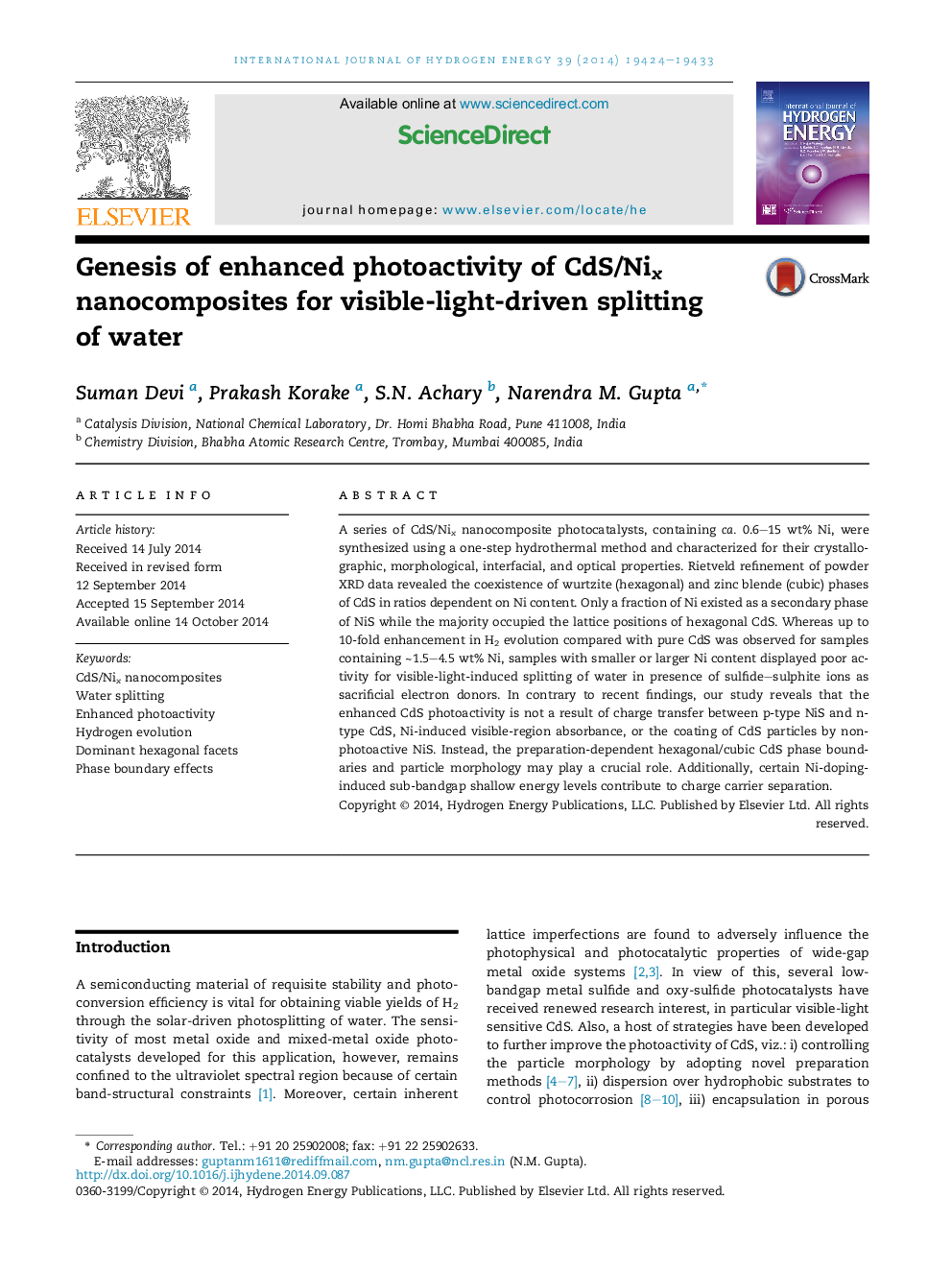| کد مقاله | کد نشریه | سال انتشار | مقاله انگلیسی | نسخه تمام متن |
|---|---|---|---|---|
| 1280694 | 1497475 | 2014 | 10 صفحه PDF | دانلود رایگان |

• CdS/Nix nanocomposites were used as visible-light water splitting photocatalysts.
• Found up to 10-fold increase in H2-evolution rate depending on the Ni content.
• The activity was controlled by CdS phase boundaries and particle morphologies.
• Dominance of hex CdS facets governed the surface microstructure.
• Ni-doping induced shallow energy levels contribute to better charge separation.
A series of CdS/Nix nanocomposite photocatalysts, containing ca. 0.6–15 wt% Ni, were synthesized using a one-step hydrothermal method and characterized for their crystallographic, morphological, interfacial, and optical properties. Rietveld refinement of powder XRD data revealed the coexistence of wurtzite (hexagonal) and zinc blende (cubic) phases of CdS in ratios dependent on Ni content. Only a fraction of Ni existed as a secondary phase of NiS while the majority occupied the lattice positions of hexagonal CdS. Whereas up to 10-fold enhancement in H2 evolution compared with pure CdS was observed for samples containing ∼1.5–4.5 wt% Ni, samples with smaller or larger Ni content displayed poor activity for visible-light-induced splitting of water in presence of sulfide–sulphite ions as sacrificial electron donors. In contrary to recent findings, our study reveals that the enhanced CdS photoactivity is not a result of charge transfer between p-type NiS and n-type CdS, Ni-induced visible-region absorbance, or the coating of CdS particles by non-photoactive NiS. Instead, the preparation-dependent hexagonal/cubic CdS phase boundaries and particle morphology may play a crucial role. Additionally, certain Ni-doping-induced sub-bandgap shallow energy levels contribute to charge carrier separation.
Figure optionsDownload as PowerPoint slide
Journal: International Journal of Hydrogen Energy - Volume 39, Issue 34, 20 November 2014, Pages 19424–19433